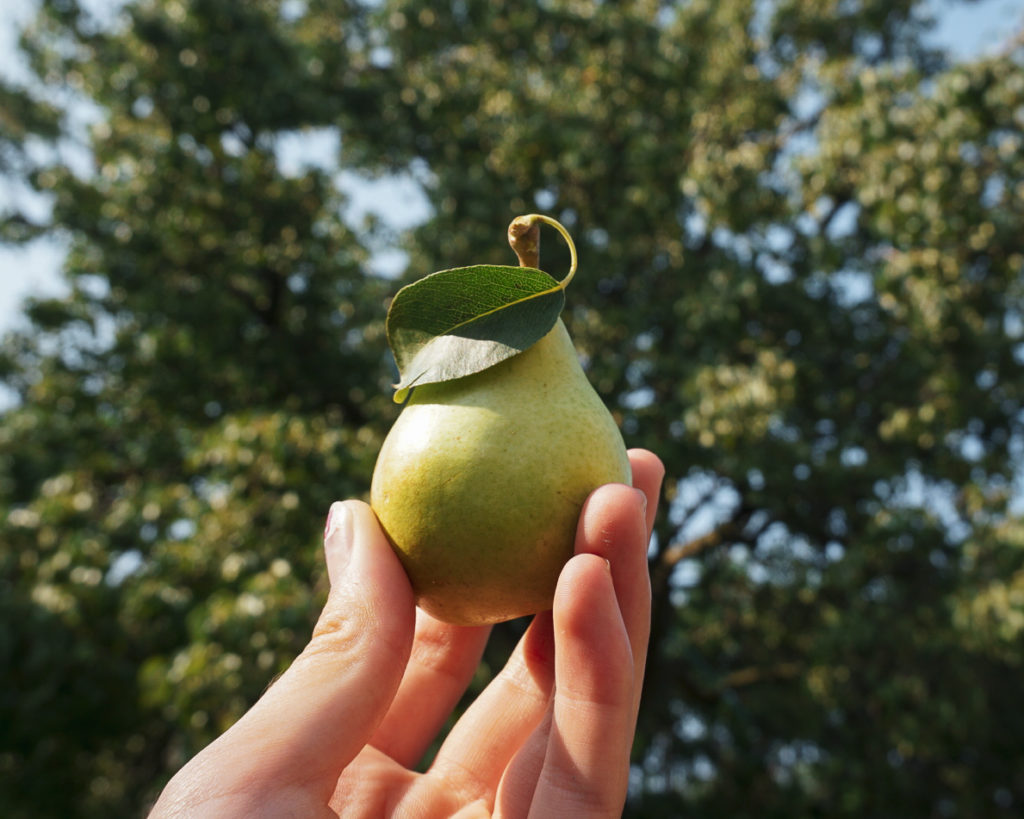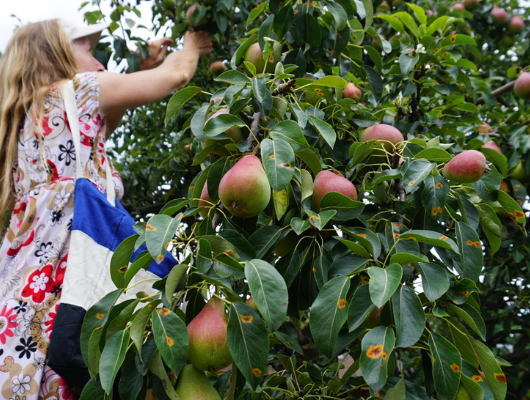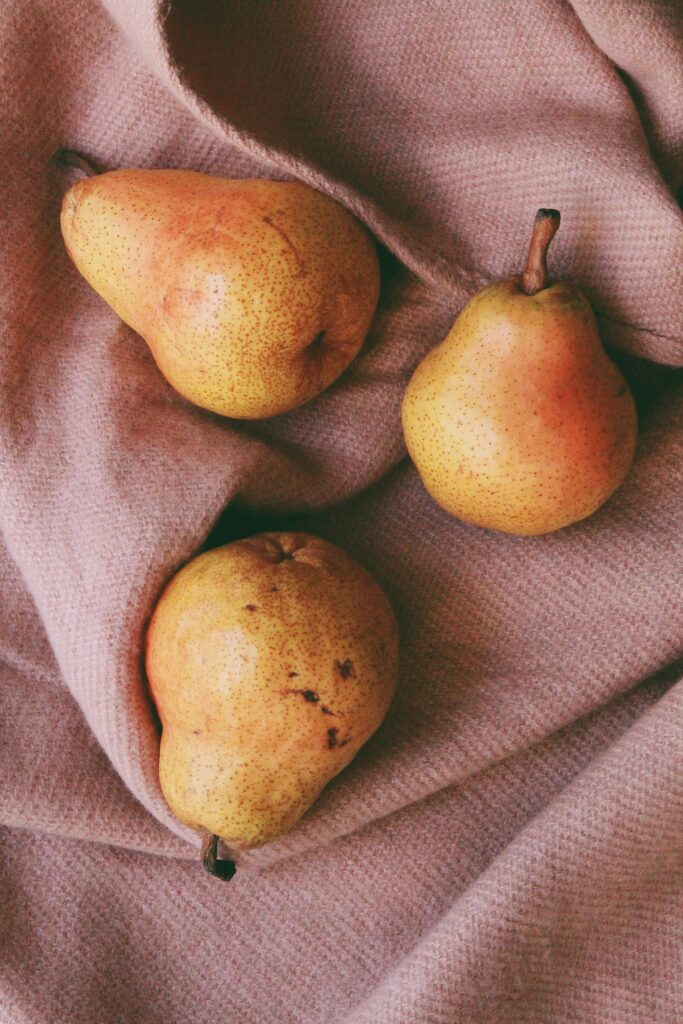Pears
Ojibwe: bookdoonzh
Summary
Pears are a delicious, nutritious Toronto treat, that are packed with antioxidants, flavonoids, and dietary fiber. Pears are teardrop shaped or round, and can be green, yellow, brown, red or a combination of these colours when mature. Pears ripen from the inside out, and should be picked when they are slightly underripe and left to ripen off the branch.
Jump To
Average Ripening Timeline: mid August to late September


Ripeness Indicators
- Color When Ripe: both fall and winter European pears will appear green, but the color will soften and may take on brown or yellow hues as it ripens. If the seeds are brown, the pear is ready to eat. If seeds are white, the pear is not mature.
- Feel & Texture When Ripe: Pears should be picked when mature (full size), but not ripe (soft). They should be firm, but have the slightest amount of give when squeezed
- Taste & Smell When Ripe: Sweet/ tart taste (after ripening off tree)
- Underripe if…small in size; lacks flavor; coarse, dry texture
- Overripe if…mushy or gritty internal texture. If ripe on outside, likely over-ripe on inside

How to Harvest
Average Yield: between 50 to 200 lbs
- Should pass “tilt test” and detach easily from the tree when tilted sideways
- Generally, all the fruit of a pear tree matures at the same time so under ripe fruit shouldn’t be a problem
- Grab the pear firmly and twist and roll it until the stem separates from the tree – resist pulling the pear directly down. This will break the stem away from the fruit, or break off the spur (branch just above the stem) which impacts the health of the tree
- Fruit picking poles can be used to pick fruit on hard to reach branches

How to Store and Eat
Storing
- Leave at room temperature to soften and sweeten. You can accelerate ripening by placing them in a paper bag with an apple or banana.
- Fridge: Keep pears longer by storing in the fridge once they are ripe
- Freezer: Wash, peel, core, and slice pears. Freeze on a single layer on a baking sheet, then transfer to a bag or container. You can also freeze pear sauces. Use within 8-10 months
Ideas for Eating
Eating fresh; adding to salads; baking; sauces; pear butter; dehydrating; fruit leather.
References:
- Indigenous names: Ojibwe People’s Dictionary; Anishinaabemowin Theme-Based Resource Book; Greenbelt Indigenous Botanical Survey